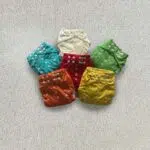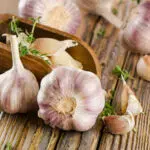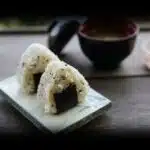Rice Ball Day is an annual cuisine event observed on April 19. This day honors one of the most well-known and delectable Japanese dishes of all time: the rice ball. The word “rice ball” refers to a clump of rice formed into a spherical shape. It does, however, come in a variety of shapes, including the triangular one. It also varies in texture and flavor according to the type of rice used and the items added to it.
If you’re already a fan of rice calls, Rice Ball Day is just another reason to indulge in what is undoubtedly your favorite food. If you aren’t, be ready for a culinary feast that will blow your mind!
History of Rice Ball Day
There is no documentation of Rice Ball Day’s history or origin. However, the origins of rice balls can be traced back to the 11th century. For generations, the rice ball has been recognized as an essential component of Japanese cuisine, particularly during lunches and picnics. Locals name it onigiri, which means “to cling on to.” A rice ball can be any type of cuisine made from rice. The material is then molded, compressed, or otherwise mixed to make a ball shape. Rice balls are especially popular in Asia and many other cultures where rice is consumed.
It was a universal meal with several extraordinary properties, not the least of which was its capacity to form an airtight seal and hence protect and preserve meat kept within.
Don’t feel like eating a cold rice ball for dinner? Not a problem! The rice is dipped in vinegar to assist it to connect and form the previously stated airtight seal, but an application of soy sauce destroys those bonds and makes a loose rice dish combined with the items it’s filled with. Throw that back into the frying pan and reheat it! Traditionally, plain rice balls with no spices or additions were the norm, but nowadays, the Japanese love a variety of flavors and styles of rice balls. They prefer to combine seasonings and condiments into plain rice rather than placing them within it.
Until the 1980s, all onigiri had to be handcrafted, making this a rare and expensive treat that could only be purchased in Japanese restaurants. All of that changed in the 1980s with the introduction of the machine that manufactured triangular onigiri, and the method has been constantly refined since then, making mass-produced onigiri available to the public!
Rice Ball Day timeline
Rice balls are consumed at picnics and when traveling throughout the Heian era.
Processed seaweed becomes available to the general public, and people wrap rice balls in seaweed to preserve them.
The machine for making triangle onigiri is created — instead of rolling the filling inside, the flavoring is placed in a hole in the onigiri and concealed with nori.
Rice balls become a comfort meal in many Asian nations since rice is eaten every day.
Rice Ball Day FAQs
How long can rice balls be left out for?
Onigiri can be kept unrefrigerated for up to six hours due to the salt in the rice, and should be eaten at room temperature or slightly warm.
What is the best way to keep rice balls fresh?
To keep the rice balls from getting soggy, wrap them individually in wax paper or plastic wrap; store the nori separately and wrap it around the onigiri just before eating.
Are rice balls healthy?
Rice balls are produced with white rice, which is heavy in carbs, yet is a mainstay in many people’s diets due to its nutritional value.
Rice Ball Day Activities
Make your own rice balls
Making some tasty rice balls is a great way to celebrate this day. It is rather simple!
Host a rice ball-themed party
You may make your party even more sociable by hosting a rice ball-themed party. You can invite your friends and family to your venue and let them sample the many types of rice balls you've cooked.
Share it on social media
You can also use social media to spread information about this day. Use the hashtag #NationalRiceBallDay to notify your friends and followers that you are also celebrating this unique day.
5 Interesting Facts About Rice Ball
Filled with many things
Rice balls can be filled with salmon flakes, tuna salad, seafood salad, konbu, umeboshi, tempura, and natto.
Onigiri
The Japanese name for the rice ball is onigiri.
Many shapes
The most common form is a triangle, however, there are now many more options, such as heart or rectangular shapes.
Many ways to wrap
The dried seaweed is usually wrapped around the bottom of the onigiri, allowing you to hold the onigiri steadily, but some people wrap the entire onigiri in dried seaweed.
Not always with white rice
It can use fried rice, white rice with spices, sprouting brown rice, or “takikomi gohan” white rice cooked with different things, like chicken, peas, mushrooms, and so on.
Why We Love Rice Ball Day
It has a long history
Since the 11th century, rice balls have been a popular snack. Rice Ball Day commemorates the popularity of these rice balls over the years.
We adore rice balls
Rice balls are popular because they are simple to make and delicious. They can be served with fresh seaweed, tuna mayo, 'umeboshi' Japanese pickled plum, or omelet.
It’s a day to experiment
Rice balls come in a wide range of flavors, from sweet to salty. Today, take your taste senses on a journey by eating several types of rice balls.
Rice Ball Day dates
| Year | Date | Day |
|---|---|---|
| 2026 | April 19 | Sunday |
| 2027 | April 19 | Monday |
| 2028 | April 19 | Wednesday |
| 2029 | April 19 | Thursday |
| 2030 | April 19 | Friday |
































